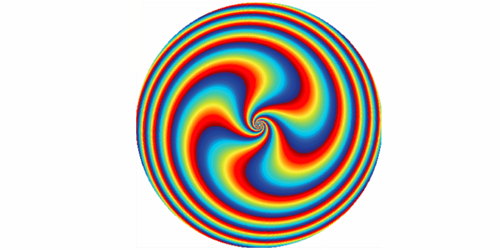Getting Plasma in a Twist
Laser beams with vortex-shaped wave fronts carry orbital angular momentum that can be used to spin nanoparticles or to encode bits of information in high-speed optical communication. Recently, researchers have started to investigate how vortex beams with ultrahigh intensities can create new phenomena as they interact with matter. A new experimental study by researchers at the University of Paris-Saclay, France, shows that intense vortex beams hitting a plasma can generate vortex beams with shorter wavelengths through the exchange of angular momentum with the plasma.
The use of vortex beams to excite plasmas is of twofold interest. First, such beams could generate doughnut-shaped charge-density waves in the plasma. These waves can create “wakefields” that are particularly suited to accelerating positrons in tabletop particle accelerators. Second, laser vortices with infrared wavelengths could generate higher harmonics of light, allowing the creation of vortices with extreme ultraviolet (XUV) wavelengths.
Adrien Denoeud and co-workers created ultrahigh-intensity vortices by passing a powerful femtosecond laser through a spiral phase plate. They then focused the vortices on a silica target that they ionized with another infrared pulse. The target acts as a mirror made of plasma that both reflects the vortex beam and converts it into XUV harmonics. An analysis of the spatial intensity and phase profiles of the reflected harmonics showed that the waves had helical wave fronts and carried some orbital angular momentum from the initial infrared vortices. The result thus establishes a new methodology for the generation of vortices with XUV wavelengths.
This research is published in Physical Review Letters.
–Matteo Rini
Matteo Rini is the Deputy Editor of Physics.





